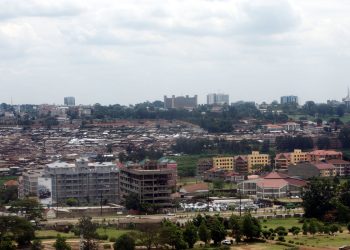Magmatic activity deep beneath the Yellowstone Supervolcano may be shifting in a northeasterly direction.
This is the conclusion of a new study by researchers from the United States Geological Survey (USGS) which probed the crust beneath Yellowstone National Park and the surrounding area.
The Yellowstone Caldera—the name refers to the large crater left behind after an eruption—is one of the largest volcanic systems on Earth. It is fed by the “Yellowstone Hotspot,” where hot plumes of magma rise from deep within the Earth’s mantle.
In the last 2.1 million years, the complex has undergone three major caldera-forming episodes, each of which has erupted hundreds of cubic miles of ash and lava—and many smaller eruptions as well.
According to the team, further research will be needed to determine when the northeastern magma reservoir might erupt.

Agil_Leonardo/iStock / Getty Images Plus
Efforts have been made previously to map out the distribution of magma beneath the Yellowstone Caldera—but such have been limited by the approaches used.
Past methods employed to probe the volcanic complex have been thrown off by other properties of the crust, such as temperature, making it hard to pinpoint the molten rock.
In their study, however, USGS volcano seismologist Ninfa Bennington and her colleagues took a novel approach, employing an electromagnetic technique that measures variations in the Earth’s magnetic field to infer the structure of the crust.
“Caldera-forming eruptions at Yellowstone are sourced by rhyolitic melts stored within the mid-to-upper crust,” the researchers explained in their paper.
Rhyolite is a thick, silica rich magma that flows relatively slowly and can lead to explosive eruptions. In contrast, it is basalt—a more runny and iron/magnesium rich magma type—that wells up from the mantle via the Yellowstone hotspot.
The team’s analysis revealed at least seven areas under Yellowstone with a relatively higher magma content—some of which are connected and feed into each other.
These magma bodies lie as deep as 29 miles beneath the caldera and as shallow as just 2.5 miles beneath the surface.
The researchers also determined that volcanic activity in the western part of the caldera may be decreasing, with future eruptions more likely to occur in the northeast of Yellowstone.
Furthermore, the team’s analysis suggests that there could be up to 105 cubic miles of molten rock in the crust beneath northeastern Yellowstone.
This is equivalent to the volume of magma released roughly 1.3 million years ago during the Mesa Falls eruption—the second most recent caldera-forming eruption at Yellowstone.
“We identify regions of basalt migrating from the lower crust, merging with and supplying heat to the northeast region of rhyolitic melt storage,” the researchers wrote,
Do you have a tip on a science story that Newsweek should be covering? Do you have a question about volcanoes? Let us know via science@newsweek.com.
Reference
Bennington, N., Schultz, A., Bedrosian, P., Bowles-Martinez, E., Lynn, K., Stelten, M., Tu, X., & Thurber, C. (2024). The progression of basaltic–rhyolitic melt storage at Yellowstone Caldera. Nature. https://doi.org/10.1038/s41586-024-08286-z



















